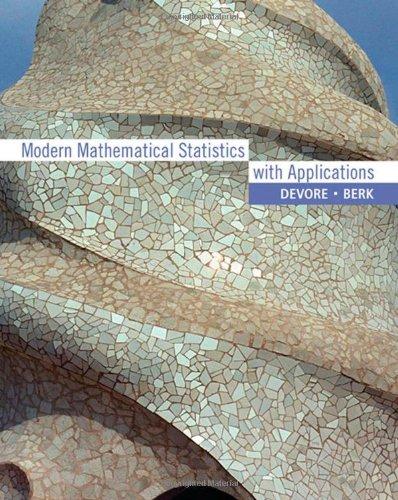88. A transmitter is sending a message by using a binary code, namely, a sequence of 0
Question:
88. A transmitter is sending a message by using a binary code, namely, a sequence of 0 s and 1 s. Each transmitted bit (0 or 1) must pass through three relays to reach the receiver. At each relay, the probability is
.20 that the bit sent will be different from the bit received
(a reversal). Assume that the relays operate independently of one another.
a. If a 1 is sent from the transmitter, what is the probability that a 1 is sent by all three relays?
b. If a 1 is sent from the transmitter, what is the probability that a 1 is received by the receiver?
(Hint: The eight experimental outcomes can be displayed on a tree diagram with three generations of branches, one generation for each relay.)
c. Suppose 70% of all bits sent from the transmitter are 1 s. If a 1 is received by the receiver, what is the probability that a 1 was sent?
Step by Step Answer:

Modern Mathematical Statistics With Applications
ISBN: 9780534404734
1st Edition
Authors: Jay L Devore






